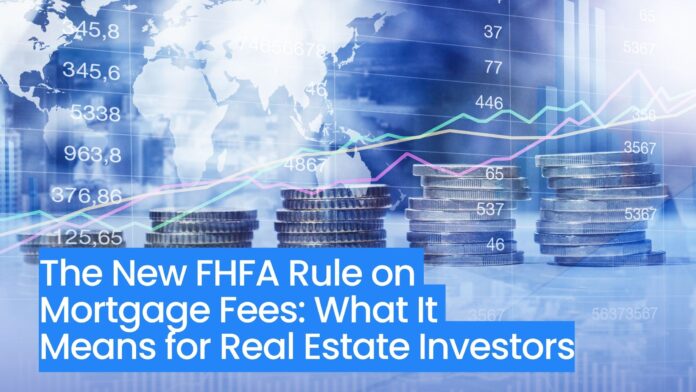Unraveling the Impact of the Loan-Level Price Adjustment Rule
Real estate investors have been buzzing about a new rule enacted by the Federal Housing Finance Agency for Fannie Mae and Freddie Mac loans regarding mortgage fees. The crux of the issue is that homebuyers with good credit will now have to subsidize those with bad credit. While this is technically true, the way it is being framed is quite misleading. Let’s dive deeper into what this new rule actually means and what it entails.
Understanding the Scope of the New Rule
First and foremost, it’s important to note that this rule would only affect Fannie Mae and Freddie Mac loans. This accounts for most loans made to homeowners, but it wouldn’t have any impact on FHA and VA loans, nor the non-conforming loans that many investors get. The fee being discussed here is called the Loan-Level Price Adjustment or LLPA, which primarily takes into account the borrower’s FICO score and the loan-to-value (LTV) ratio of the mortgage. Other factors that may be considered include whether the property is owner-occupied or not, if it’s a condo or single-family residence, whether it’s a second or first mortgage, and if there is any cash-out on a refinance.
The Role of the LLPA Fee
The LLPA fee is then effectively added to the mortgage. For instance, if the mortgage is $100,000 and has a 1% LLPA, the LLPA would be $1,000. This cost could be paid as a fee, but it is more commonly absorbed by the lender in exchange for a higher interest rate on the loan. This added cost on the mortgage is meant to cover Fannie Mae and Freddie Mac from the added risk of lending to riskier borrowers.
Debunking the Myth of High Credit Score Subsidization
Despite the alarm that has been sounded within the real estate investment community, it’s important to understand that borrowers with high credit scores will still pay less than those with lower scores. The LLPA is intended to cover some of the added risk associated with lending to borrowers with low credit scores. However, those with low credit scores are much more likely to default on their loans than those with good credit, as evidenced by research conducted by FICO and other institutions.
Credit Score Impact on Default Rates
For example, FICO’s research showed that at a score of 800, approximately 180 borrowers can be expected to consistently pay their loans on time for every one borrower that defaults. In comparison, for consumers with a score of 600, one out of every 11 borrowers is expected to have payment problems. Other research conducted by the SEC found that between 2000 and 2002, those with a FICO score of 750 or more had a probability of default of just 1%, whereas those with a score of 600-649 had a default rate of 15.8%, and those under 500 had a default rate of a whopping 41%.
The New Rule’s Impact on Borrowers
The LLPA fee is intended to cover some of this added risk, but it appears that even the old LLPAs were a bit generous, given the average loss that a bank takes on a mortgage that gets foreclosed on is around 40%. By reducing the LLPA for riskier borrowers, the costs to Fannie and Freddie are likely to increase even more. As a result, basic economics dictate that this loss would need to be offset by increasing rates across the board, including on borrowers with high credit ratings. Thus, borrowers with high credit ratings will end up subsidizing those with low ratings, but borrowers with low credit ratings will not be paying less than borrowers with high credit ratings.
The Real Impact of the New FHFA Rule
While the new FHFA rule regarding mortgage fees has caused some concern within the real estate investment community, it’s important to understand that the actual impact on borrowers with high credit scores is not as dire as it has been made out to be. The rule only affects Fannie Mae and Freddie Mac loans, and borrowers with high credit scores will still pay less overall compared to those with lower credit scores, despite the subsidization.
Assessing the Market Response
It’s crucial for real estate investors to monitor how the market responds to this rule change in the coming months. While the rule does introduce a certain degree of cross-subsidization between high and low-credit-score borrowers, it is also intended to reduce the overall default risk in the mortgage market by incentivizing lenders to offer more competitive rates to borrowers with lower credit scores.
Future Implications for Real Estate Investors
Real estate investors should stay informed about the developments related to this new rule and its potential impact on the mortgage market. It’s possible that the rule could lead to a shift in the way lenders and borrowers interact, which may create new opportunities or challenges for real estate investors. Understanding these changes and adapting to them will be key for investors to navigate the evolving landscape successfully.
In the meantime, investors should continue to focus on their investment strategies and make well-informed decisions based on their risk tolerance and investment goals. By staying informed and adapting to changes in the market, real estate investors can better position themselves for long-term success in an ever-changing landscape.










